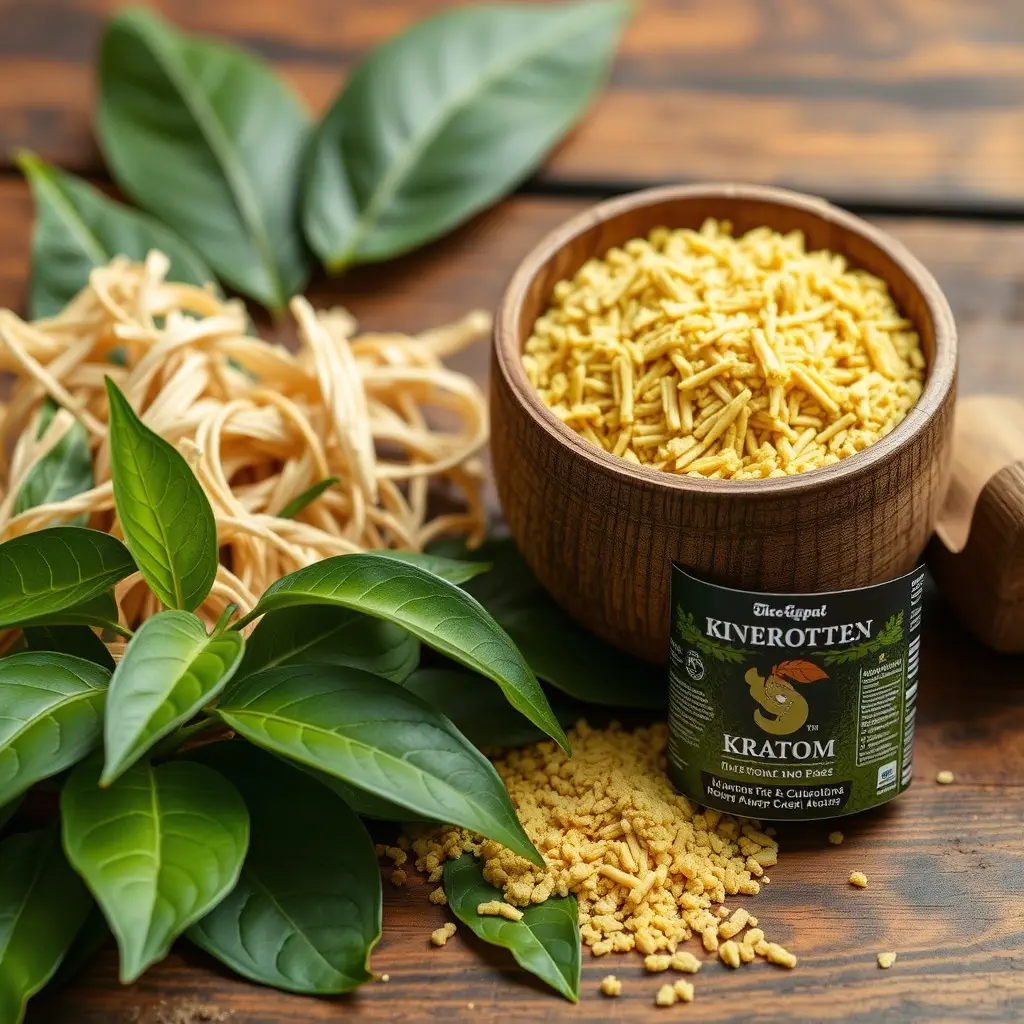Kratom, a plant from Southeast Asia with active ingredients like mitragynine and 7-hydroxymitragynine, has emerged as a natural alternative for stress and anxiety management. Its interaction with opioid receptors may offer pain relief and mood enhancement, though effects vary by dose, strain, and individual physiology. The scientific community is researching kratom's therapeutic potential, with particular attention from the U.S. military, which has shown interest in its impact on performance amidst high stress levels. This has led to questions about Army drug testing policies, specifically "does the army test for kratom." As the military evaluates kratom within its drug testing protocols, service members must stay informed of these evolving regulations. Kratom's effects and safety profile require careful consideration, with a focus on responsible use and adherence to local laws. It's crucial for users to source kratom reliably and to integrate it into a broader stress management strategy that includes mindfulness, exercise, and adequate sleep for optimal results.
exploration into the potential of kratom as a natural stress and anxiety mitigant is gaining momentum. This article delves into how kratom, a botanical ally, can be leveraged to navigate the tumultuous seas of stress and anxiety. We will dissect its role in stress management, examine its effects on military personnel, and offer guidance on safe usage. With a focus on understanding kratom’s influence and addressing policies like those within the army, such as does the army test for kratom, this piece aims to provide clarity and support for individuals seeking alternative pathways to serenity. Join us as we unravel the intricacies of kratom usage for stress relief, including optimal dosage, strains, and best practices to ensure a harmonious experience.
- Understanding Kratom's Role in Stress and Anxiety Management
- The Impact of Kratom on Military Personnel: Addressing Army Testing Policies
- Safe Kratom Use for Stress Relief: Dosage, Strains, and Best Practices
Understanding Kratom's Role in Stress and Anxiety Management
Kratom, a plant native to Southeast Asia, has garnered attention in various circles, including those exploring natural methods for stress and anxiety management. The mitragynine and 7-hydroxymitragynine alkaloids found in kratom leaves are believed to interact with the body’s opioid receptors, potentially offering analgesic and mood-elevating effects. These interactions can lead to a reduction in stress and anxiety levels for some individuals. However, it’s important to approach kratom with caution, as its effects can vary widely among users due to differences in dosage, strain, and individual physiology.
The scientific community continues to study the therapeutic potential of kratom, including its influence on mood and stress response. While some users report significant benefits, others may experience side effects or adverse reactions. It’s worth noting that the United States military has considered the impact of kratom within its ranks, as highlighted by queries like “does the army test for kratom.” This interest stems from the potential for kratom to both aid and hinder performance, depending on its use and the individual’s response. As such, understanding kratom’s role in stress and anxiety management requires a nuanced approach that considers individual experiences, potential benefits, and the need for further research to fully understand its effects and implications. Users considering kratom as a tool for managing stress and anxiety should seek guidance from healthcare professionals and stay informed on the evolving regulatory landscape surrounding this complex plant.
The Impact of Kratom on Military Personnel: Addressing Army Testing Policies
Kratom, a plant from Southeast Asia, has garnered attention in various sectors, including military communities, for its potential impact on stress and anxiety management. The mitragynine and 7-hydroxymitragynine alkaloids found in kratom leaves have been subject to study for their effects on pain relief and mood enhancement. As military personnel often face unique psychological and physiological demands, the exploration of alternative, natural supplements like kratom for stress mitigation has become a topic of interest. It’s imperative to understand the Army’s stance on kratom use, as its inclusion in testing policies can significantly influence service members’ well-being and compliance with regulations.
The military’s approach to kratom is an evolving area, with the Army periodically updating its drug testing policies to account for emerging substances. As of recent updates, does the army test for kratom remains a relevant question for personnel seeking to manage their mental health naturally. The Army’s testing protocols are designed to maintain operational readiness and ensure the safety and well-being of troops. Kratom’s legal status and its classification within the military’s drug policy can vary, potentially leading to inconsistencies in how it is perceived and tested across different branches. Service members considering kratom as a tool for stress management must stay informed about the Army’s evolving stance to navigate this complex issue responsibly.
Safe Kratom Use for Stress Relief: Dosage, Strains, and Best Practices
Kratom, a plant native to Southeast Asia, has gained attention for its potential stress-relieving and anxiety-reducing effects. When considering kratom for stress relief, safe use is paramount. The correct dosage is crucial for experiencing the desired calming effects without overstepping into sedation or negative side effects. Generally, a lower dose is recommended for energy and focus enhancement, while a higher dose may have more pronounced analgesic and relaxation properties. However, individual sensitivity varies, and it’s important to start with a minimal effective dose and adjust as needed.
Among the many kratom strains available, some are more favored for stress relief. Maeng Da and Bali strains are often cited for their calming effects, while Red Vein strains are also popular for relaxation. It’s important to note that the alkaloid profile can differ between strains, which may influence the experience. Additionally, the method of consumption—be it capsules, powder, or tea—can affect the onset and intensity of effects. Best practices for kratom use include purchasing from reputable sources to ensure purity and potency, adhering to local laws, and avoiding combination with other substances that could alter its effects or increase the risk of adverse reactions. It’s also prudent to be aware of the broader context, such as the army’s stance on kratom use, as this can impact personal decisions and legal implications. Engaging in a comprehensive approach that includes stress management techniques like mindfulness, exercise, and adequate sleep can complement the use of kratom for a holistic stress reduction strategy.
Considerable insights have been provided into how kratom can play a pivotal role in managing stress and anxiety. The article has explored the nuances of kratom’s impact, including its effects on military personnel, with particular attention to Army testing policies—a topic that frequently prompts inquiries such as “Does the army test for kratom?” Guidance on safe usage, tailored dosage recommendations, and the most effective strains have been delineated to ensure responsible use for stress relief. In conclusion, the integration of kratom into stress management strategies may offer a promising avenue for individuals seeking natural alternatives, particularly within communities that experience heightened levels of stress, such as those in military service. It is imperative for prospective users to approach kratom with caution, adhering to recommended practices and understanding its potential within the broader context of holistic wellness approaches.






